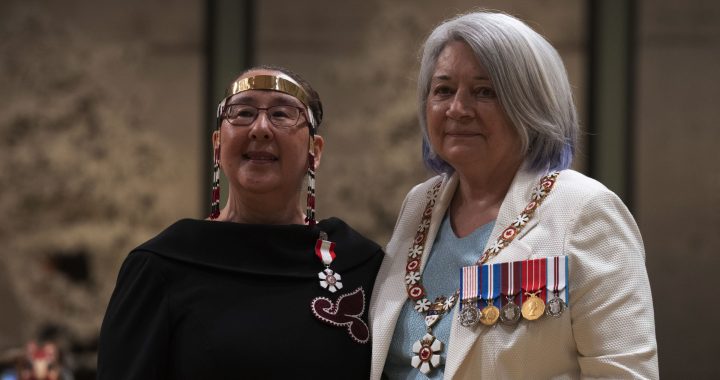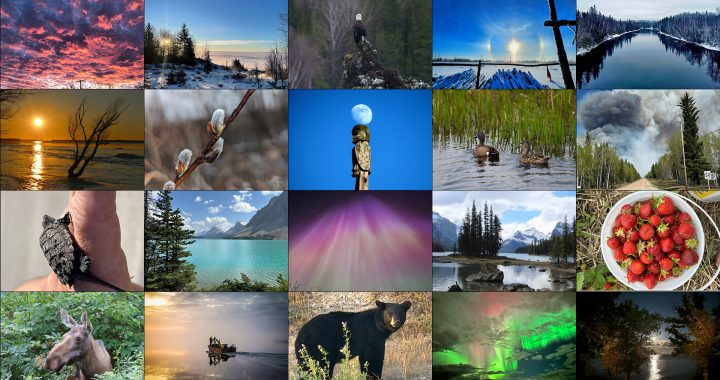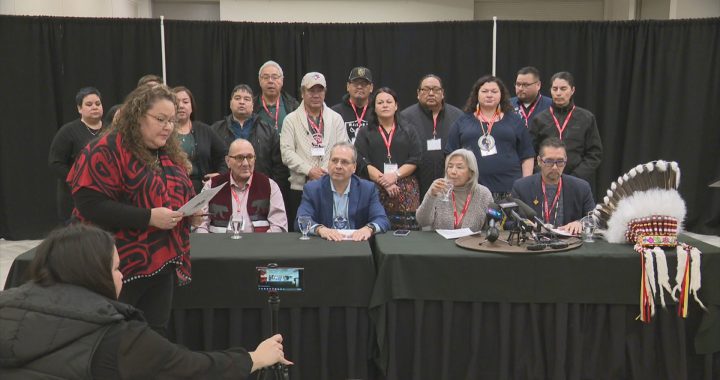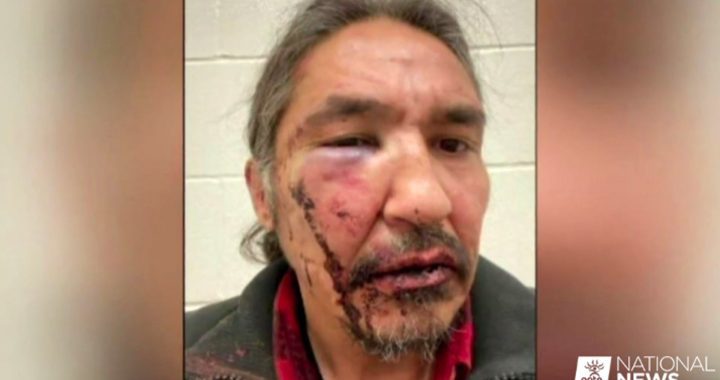It’s become somewhat of a cultural phenomenon: for three days, over 60,000 people from countless fictional worlds hold court at the Palais des Congres for Montreal’s Comiccon in a celebration of fantasy and collective nerdom.
But tucked away in one of the convention centre’s many aisles is comic book artist Thomas Deer, Mohawk from Kahnawake.
It’s been years since he last set up at Comiccon – which normally falls on the same weekend as his community’s Pow-wow – and Deer says he’s noticed its popularity growing at an exponential rate.
“I remember going to a show maybe about 20 something years ago, and it was very sparsely populated, and it was probably the size of a bedroom – it was kind of disappointing,” he explained.
“It took a little while for Montreal and other places to kind of catch up to that kind of mega format.”
120 works
The veteran artist and colourist has more than 120 published works to his name, with subjects ranging from G.I. Joe to Transformers to Batman.
Aside from the obvious shift in the size of Montreal’s Comiccon event – still a far cry from San Diego’s Comiccon or New Mexico’s Indigenous-specific version – Deer said he’s also noticed a diversity shift in the works and characters being showcased.
Four years ago, he worked as a historical and cultural consultant for Ubisoft as they developed Assassin’s Creed III, a role-playing game focusing on a historically sensitive Mohawk protagonist, Ratonhnhaké:ton or Connor.
“Just looking at how embraced that character was, that Indigenous, that Kanien’keha:ka character was, I think it’s a testament to the interest in a character that’s authentically Indigenous – not a character that is a stereotype.”
Historically, comic book incarnations fell prey to these stereotypes: war bonnets, red skin, and the ‘savage label’ all overused, even by perennial kids’ favorites like Bugs Bunny and Walt Disney.
In 1948, Lone Ranger’s faithful companion Tonto appeared – later to get his own 33-issue namesake series.
Then came Turok, a Mandan character whose appearance in comics has gone almost unbroken since the 1950s followed up by appearances in video games across platforms.
DC Comics had Sioux character Ohiyesa Smith or “Pow-wow Smith,” a master detective long considered to be the “Indigenous Batman.”
Then came Johnny Cloud, a Navajo WWII fighter pilot in 1960. Thomas Kalmaku, an Inuit Air Force Mechanic – and Green Lantern’s best friend – was also introduced in 1960.
But it was Red Wolf, Marvel’s first Native superhero who flipped the representation narrative on its head after a redesign by S’klallam artist Jeffrey Veregge decades after his first appearance.
“Just in the past maybe two, three years, probably due to social media, there’s a lot more Indigenous comic book artists that I’m becoming aware of, and I think they’re all networking,” Deer said.
Indigenous portrayals
While he admits some of his own Indigenous-centric characters have remained on the back burner for almost 20 years, Deer is encouraged by the surge in Indigenous portrayals across the superhero landscape.
Last year, Marvel unveiled Snowguard, its first Inuk superhero – a teenage shapeshifter from Nunavut, designed with a keen focus on northern culture and lore, and based on advice from Nyla Inuksuk, a virtual reality designer from Igloolik.
“It’s really exciting to see such a great representation of a young Inuk woman,” Inuksuk told APTN News after Snowguard’s unveiling. “I feel like as Indigenous people, we just can’t get enough positive stories about young women who are, you know, powerful and strong and doing what they believe in – and in this case, saving the world.”
“I definitely like the tattoos that the characters has, because it’s culturally consistent,” Deer said when presented with a photo of Snowguard.
The fact that she’s a far cry from Inuk predecessor Nelvana of the Northern Lights – Canada’s first female superhero, introduced even before Wonder Woman – shows progress, Deer said.
But Indigenous youth, like 15-year-old Patrick Zachary, have expressed a desire to push the Indigenous agenda further, perhaps through the introduction of a character with powers inspired by his Mohawk ancestors.
“[Powers] like healing, or maybe like telling the future or something like that – something that’s often associated with us,” he said.
With more Indigenous artists coming up through comic books, Deer believes it’s a viable possibility.
“I think there’s a lot of potential there, and these artists are really fantastic artists; they’re not there because they’re Indigenous – they’re there because they’re good storytellers,” he added.










